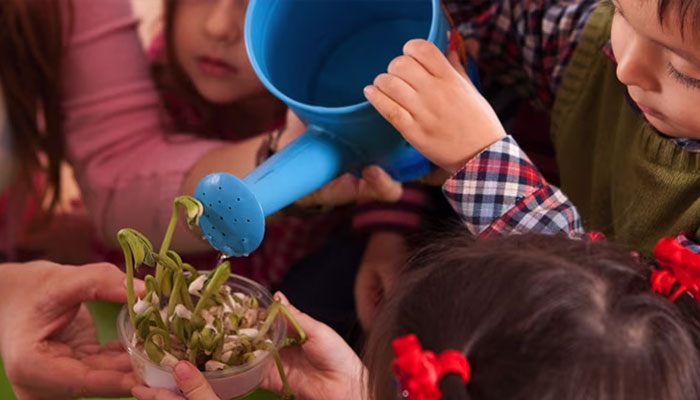While we believe that the books and resources recommended may be of value to you, keep in mind that these are suggestions only and you must do your own due diligence to determine whether the materials are appropriate and suitable for your use. PNC has no sponsorship or endorsement agreement with the authors or publishers of the materials listed.
SPRING

How Plants Drink
Children will learn how plants absorb water and nutrients.

Lesson Objective
The children will observe how water and nutrients are delivered to all parts of a plant.
Science
What You'll Need
- Celery stalks – 1 per child
- Tall clear plastic containers – 1 for every 4 stalks of celery
- Water
- Food coloring – a variety of colors for fun comparison
What To Do
Note: Before distributing celery to children, make a fresh cut across the bottom of each celery stalk (flower stem or cabbage end).
- Distribute the celery to the children and allow them to observe the celery stalk. Activate background knowledge about celery by discussing what it is, where it came from, what it needs to live, where the bottom and top of the stalk are, and how plants get water (see Did You Know?).
- Tell the children they will be learning how plants get water. Ask the children to observe their celery and share how they think the celery “drinks water” – have them make predictions.
- Demonstrate placing several drops of color into the water and stirring the water to mix the color evenly.
- Assist the children with placing several drops of food coloring in the container and allow them to do the mixing.
- Demonstrate how to place the stem of the stalk in the water and have the children follow along.
- Tell the children to observe the stalk in the colored water and then discuss and draw/document what they see.
- Allow the celery to soak in the water overnight. The next day, have the children observe, discuss, and draw/document what occurred.
- The leaves should begin to show some color. Have the children share their thoughts about what is causing the stalk/leaves to change (see Guiding Student Inquiry).
- Continue to observe the celery over the next few days recording the intensity of the color on the stalk/leaves.
- Remove the stalks from the containers and have an adult slice the stems to observe inside the stalks as well. Discuss/draw/document.
Resources
Home School Resources
Home educators: use these printable lesson PDFs to teach this lesson to your home schoolers. They're available in English and Spanish.
Content Provided By
Common Core State Standards Initiative – These lessons are aligned with the Common Core State Standards ("CCSS"). The CCSS provide a consistent, clear understanding of the concepts and skills children are expected to learn and guide teachers to provide their students with opportunities to gain these important skills and foundational knowledge [1]. Visit the CCSS


